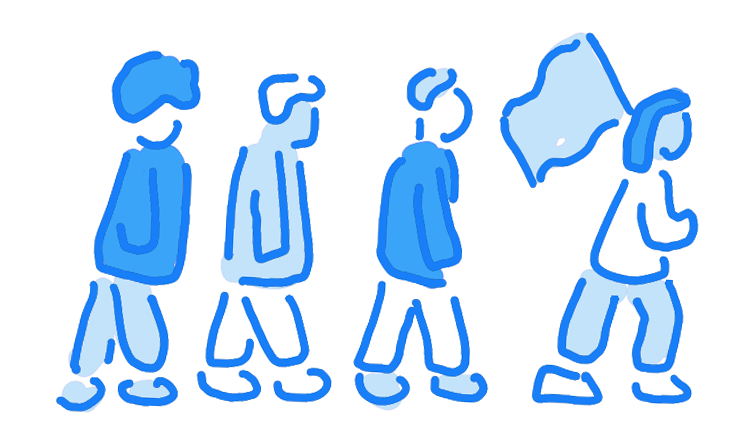Rabbet Product Leadership
Rabbet
Rabbet is a B2B SaaS platform that streamlines financial processes for general contractors, including pay applications, invoices, and budgets using OCR technology.
The Problem
When I joined Rabbet, it became immediately clear that our product development process was in disarray. The primary issue was the lack of a structured framework for making product decisions. Instead of a unified strategy, various departments vied for attention to push their own features and projects. This competitive environment led to decisions being made by the loudest voices rather than through a thoughtful and cohesive process.
Our product roadmap reflected this chaos. Features were added in a piecemeal fashion without a clear narrative or strategic alignment. The result was a product that struggled to tell a compelling story to our users, lacked coherence, and often failed to meet the actual needs of the market. We were trying to be everything to everyone, which diluted our focus and effectiveness.
Moreover, we lacked a consistent method to evaluate the success or failure of our product features. Without clear metrics and a structured approach, it was challenging to learn from our past efforts and make informed decisions. This inefficiency not only hampered our ability to innovate but also led to significant wasted effort and resources.
My Role
As Director of Design at Rabbet, I worked tightly with the CTO on how we handled product, design & development processes. We had weekly process meetings where we talked about what was working, what wasn’t, and how we could constantly improve. Over the course of a couple years, we reworked our process to focus less on building new features and more on delivering value to users.
Building Things People Want
When I started, there were a few issues regarding how product decisions were made. We knew that our product process wasn’t working, but we didn’t really know what a good process looked like.
To begin with, we realized we were choosing individual features that didn’t tell a story together. To figure out the real direction we needed to go, we needed to step back and look at the bigger picture. we conducted extensive market research and engaged with our sales team to identify a specific market segment where we had repeated success. This focus allowed us to create a product that targeted the precise needs of this niche market.
We developed a strategic approach, setting measurable goals and breaking them down into smaller, actionable steps. Our bi-weekly meetings were essential for discussing five key questions:
What did we learn in the past two weeks?
What is the current condition?
What obstacles are preventing progress?
What is the smallest next step to overcome these obstacles?
What do we expect to learn or change?
This structured, iterative process ensured continuous learning and adaptation. We prioritized building the right functionality over simply adding new features. By involving the entire team—from developers to QA testers—in validating questions, building prototypes, and conducting user interviews, we ensured that everyone understood the broader vision and their role in achieving it.
Building Efficiently
Our product development process was bogged down by excessive documentation. The design team spent too much time on detailed user stories and acceptance criteria, which developers struggled to interpret. This led to miscommunication and wasted effort.
“If you want to build a ship, don’t drum up the men to gather wood, divide the work, and give orders. Instead, teach them to yearn for the vast and endless sea.”
-Antoine de Saint-Exupéry
We shifted our focus from extensive documentation to understanding the "why" behind our work. Inspired by the idea of teaching the team to "yearn for the vast and endless sea," we aimed to instill a deeper understanding of the product vision and user needs.
We reduced rigid specifications and involved developers early in the design process, allowing them to understand the rationale behind features. By participating in user interviews and prototype testing, developers made more informed decisions, reducing rework.
Our bi-weekly meetings emphasized continuous learning and alignment with strategic goals. This collaborative approach minimized time spent on non-essential tasks and maximized focus on delivering user value. The result was improved communication, efficiency, and a sense of ownership among team members, enhancing our overall productivity.
Change Management
Implementing these changes brought growing pains. Transitioning from a rigid, documentation-heavy process to a flexible, vision-focused approach was challenging for some team members. We prioritized compassionate dialogue, addressing fears and uncertainties through open communication.
We provided training and encouraged collaboration, building confidence and trust within the team. By involving everyone in the process and addressing concerns empathetically, we successfully guided the team through this transition, creating a more cohesive and empowered workforce.
The Outcome
The transformation of our product development process led to significant improvements:
Coherent Product Development: Our product became more focused and aligned with market needs, resulting in a cohesive and competitive offering.
Increased Efficiency: Reducing unnecessary documentation and involving developers in the design process streamlined our workflow, improving overall efficiency.
Empowered Team: Team members felt more engaged and responsible for their work, leading to higher motivation and productivity.
Overall, these changes positioned Rabbet for sustained success, allowing us to deliver a product that truly resonated with our target market.




